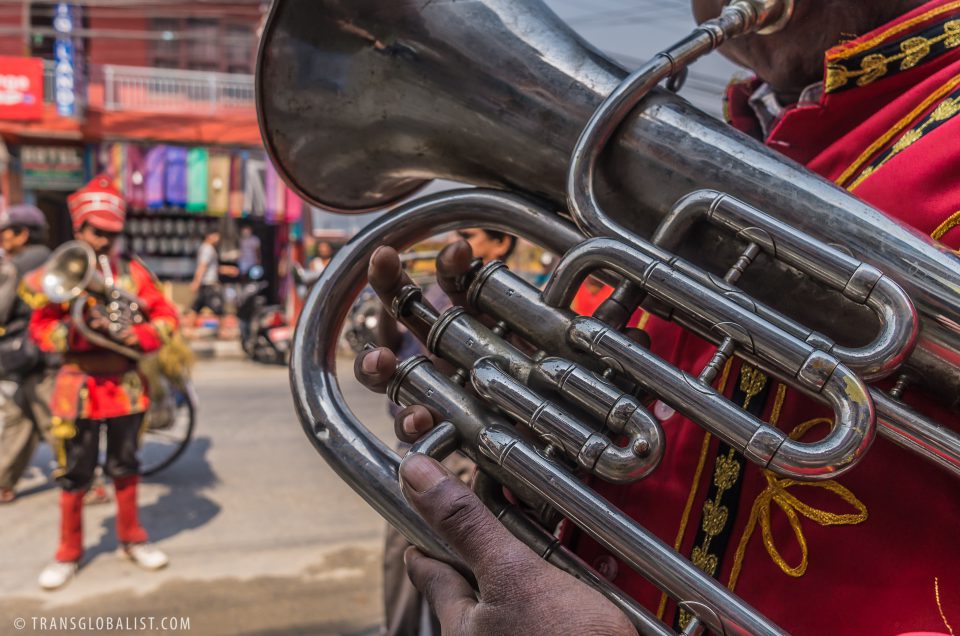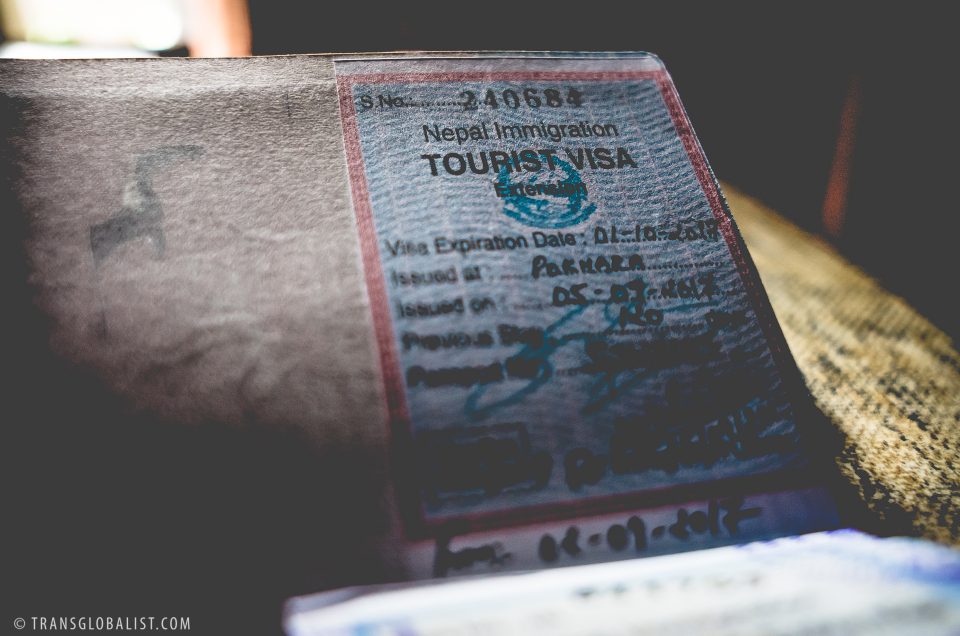In which a Tibetan plants a seed, a Quest is joined, and Willis survives the dried raisins.
*****
First let me give you some behind-the-scenes info. A couple of days ago I intended to regale you with tales of a wonderful, challenging, at times exasperating five-day trek along the Ghorepani circuit here in central Nepal. No longer. Why? Because somewhere along the way I asked a couple of seemingly innocuous questions–inadvertantly setting wheels whirring into motion and dominoes toppling until suddenly that trek wasn’t even close to the top of the amazing-shit-happening-to-me-in-Nepal list.
The story begins innocently enough.
It’s the second morning of our trek. As we’re gearing up to leave for Ghorepani, a young Tibetan man sells his wares in front of our lodge, from a carpet spread over the stone steps. He overhears me inflict bad Nepali on our guide Yogi and wonders aloud how long I have been learning. I tell him. (“Five lessons, and one days’ worth of walking.”) I’m unsure whether this helps or hurts my case as he grunts dubiously and tells me of a Canadian volunteer he met some months ago. This young woman taught English in Ulleri village (2000M, and where this exchange transpired), stayed with a local family, and departed four weeks later speaking passable, if rudimentary, Nepali.
And with that offhand remark, the damage had been done. Yet another seed planted, growing irrevocably. Obsessive neuronal firings instantly overcome my weak, impressionable, non-resisting brain. And, just that quickly, the Transglobalist–a guy who’d already quit his former life and moved half a world away–found himself on a Quest within a Quest: he would live in the mountains, teach English, learn Nepali; full speed ahead and damn the torpedoes, trial by fire, etc., etc.
You evil Tibetan bastard!
C’mon. I’m already living in Nepal, right? Flying paragliders, going on treks, hobnobbing with Rastafarian acolytes, exploring my inner bovinity (Hi, Bob…), and incrementally learning a smattering of Nepali when time and money permit. That ought to be enough, right? Right. But it’s not. There’s a wee devil on my shoulder, egging me on; a fully-autonomous, homunculoid zombie consciousness, ruthlessly devouring every tasty morsel of common sense. Why settle for a hit of the merely fantastic when you can bliss out with a fix of ultra-über-epic, right? (You hearin’ me, Beck Treks?)
Inquiries begin immediately. The lodge owner in Ghorepani knows of a school in Shikha–two hours’ walk to the North–which may need help. I am tempted to take off on my own to visit their principal, but Yogi talks me down and gets some contact information instead. Despite constant requests, there are no other nibbles along the trail. In Pokhara, I mention the Quest to my landlord Govinder, and Prahmod, the owner of the trekking supply shop next-door. For a few hours, that was that.
And then suddenly it wasn’t.
Here I sit, the Great Lover of All Things Quixotic–seven days after my Tibetan encounter, three days after returning to town–preparing to store my belongings (again!) and disappear for six weeks on a journey within a journey. Six days from now, I travel to a remote village named Kot, in the Bhojpur district of eastern Nepal. To get there, I’ll snag one of two weekly turboprop flights departing Kathmandu for a tiny asphalt airstrip in Bhojpur village, then tote my gear a half day’s walk to Kot. This village has no electricity, no modern toilets or showers, no indoor plumbing, straw mats for sleeping, and no way other than NCELL (the national cellphone service) to exchange messages with the outside world. I’ll be teaching English for the final six weeks of the semester, after which school and village shut down so everyone can tend to the crops. (The local economy is 100% agricultural; whether they’ll be planting, harvesting, or both, I dunno…but their work is tied to the arrival of the monsoon, and if they don’t get it done, they go hungry for the next year.)
Outside the classroom, all communication will be in Nepali or nothing–morning ’til night; day after day; sink, swim, or die trying; six-weeks of information overload; a pure, unvarnished challenge to keep the restless zombie homunculus at bay. I will be a minority of one in a place inaccessible by car, jeep, or bus, with no tourist infrastructure, virtually unvisited by Westerners. Locals are unaccustomed to “ghora”–the Nepali language version of “gringo,” and even more so than usual I will be an oddity. The villagers are already collectively curious to see the tall white guy.
[Quick Nepali lesson: I’m a tall white “guy” not tall white “ghai,” which sounds like guy but means “cow.” Nor am I a “dudh” which sounds like dude but means “milk” or–to the immense joy of Beavis and Butthead fans everywhere–“breast.” Got it?]
People with experience here will often tell you “T.I.N.”–traveler’s shorthand for “This Is Nepal.” They’re pointing out the otherness of the place and will tell you things here are simply easier than elsewhere; that you can find a way to do anything you want; that any small inconveniences you’ll encounter are more than balanced out by a near total freedom to conjure reality from imagination. You always sort of believe them–about the small scale things. Then something like this happens and you’re a convert to Nepal’s magic, a True Believer. The realization hits you: it was all true all along, at every order of magnitude. Nepal is a Mandelbrot set of infinite possibilities, of experiences impossible anywhere in the developed world. Your disembodied dream has been made manifest by one local shopkeeper in Pokhara, hundreds of kilometers from his home, resting upon nothing more than a casual, passing conversation and a handshake; it’s a done deal, approved by the school’s principal, dates set and tickets purchased. In one week you board a flight from Kathmandu to Bhojpur, meet Prahmod’s brother, move into his home, live with his family, and become as fully integrated into a tiny, traditional Nepali community as you choose to become. And all of it–every magnificent bit–is happening for no reason beyond your own curiosity, a couple of half-formed (and uninformed) questions, and the surrealism inherent in one tiny country perched along the roof of the world.
I’m still reeling from the inestimable coolness of it all. But there remains one last revelation–a bit of gilding on an already-glorious lily….
The Kot schoolhouse has the rare luxury of a solar panel sufficient for charging emergency cellphone, GoPro™ cameras, and computer. A nod to modern convenience. These items wouldn’t be strictly necessary, but Prahmod has also asked me to evaluate the potential for trekking and tourism in and around his village; to provide one crazy ghora‘s unvarnished impression. This entails shooting video (duh), writing about my experiences, and [here’s that final reveal] taking a 3-4 day trek to a remote, unspoiled location with a panoramic view of Mount Everest that no Westerner has yet seen.
(Didja get that?: Mount Everest. Unspoiled vantage point. First Westerner = Me.)
Hmmm…I dunno, Prahmod. The whole ordeal sounds rather unpleasant. Particularly that last bit. Tedious. But, if you’re gonna keep twisting my arm, I guess I’ll suffer through; soldier on; keep a stiff upper lip.
Y’know, just to be nice.
*sigh*
Peace and Dried Raisins to everyone,
(especially Willis, who’s probably feeling pretty cheated right about now, but really really deserves it. Ha!),
—the Transglobalist














